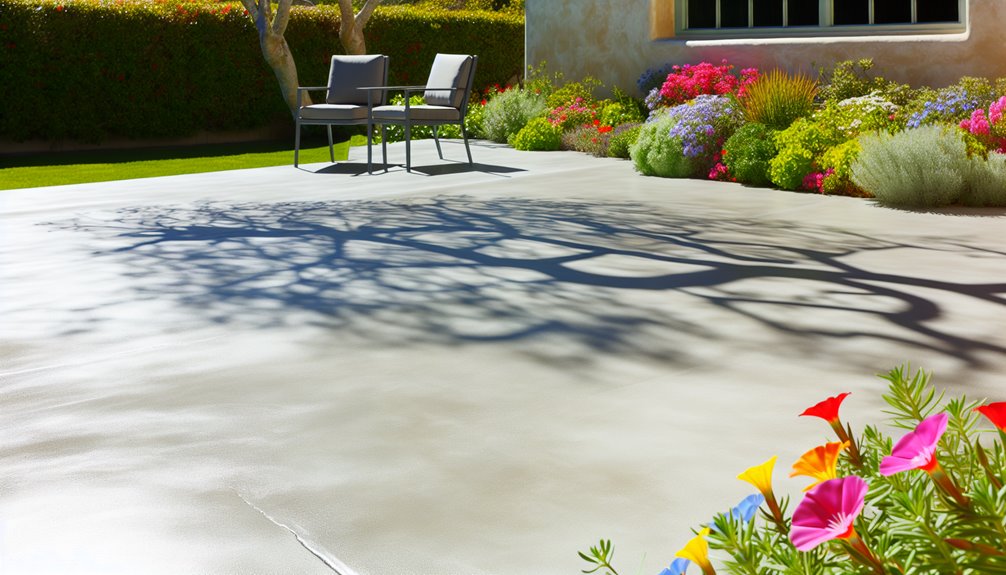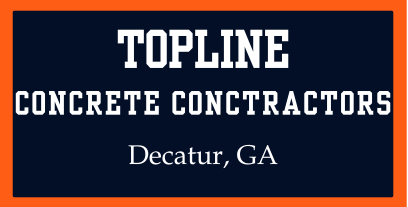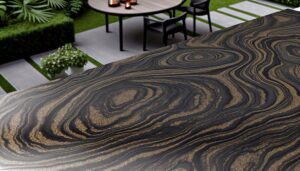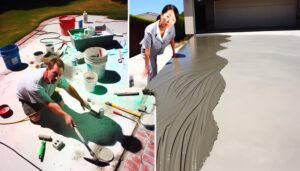
Maintaining your concrete surfaces is essential for their durability and appearance, but it's often overlooked. You might think regular cleaning is enough, but there are several best practices you should consider to keep your concrete in top shape. From choosing the right sealants to addressing cracks before they worsen, each step plays an important role in prevention. If you're unsure where to start or what techniques work best, you'll want to explore the fundamental strategies that can make a significant difference in your maintenance routine.
Regular Cleaning Techniques
To keep your concrete surfaces looking their best, regular cleaning is essential. Start by establishing a maintenance schedule that includes seasonal cleaning to tackle dirt and grime buildup.
Begin with debris sweeping to remove loose leaves, dirt, and other debris that can trap moisture and lead to stains.
For deeper cleaning, pressure washing is an effective method to blast away stubborn grime. Use eco-friendly cleaners during this process to guarantee you're not harming the environment while achieving great results.
If you encounter tough stains, consider using specialized stain removal products designed for concrete.
In addition to pressure washing, surface brushing can help scrub away any remaining dirt, especially in textured areas.
Remember that regular cleaning not only enhances the appearance of your concrete but also prolongs its lifespan.
By sticking to your maintenance schedule and incorporating these techniques, you'll keep your surfaces in prime condition.
Make sure to adjust your cleaning methods based on the season and the amount of foot traffic your surfaces receive.
With these regular cleaning techniques, you'll maintain the integrity and beauty of your concrete surfaces effortlessly.
Sealing Concrete Surfaces
Sealing concrete surfaces is a crucial step in maintaining their durability and appearance. By applying a sealant, you can greatly enhance surface longevity, protecting it from damage caused by moisture, stains, and harsh weather conditions.
It's important to choose the right sealant for your specific type of concrete, whether it's indoor, outdoor, or decorative.
Before you start sealant application, make certain the surface is clean and dry. Remove any dirt, debris, or previous sealant layers to guarantee proper adhesion. Depending on your sealant, you might need to apply a primer as well.
Once you've prepared the surface, use a roller or sprayer to apply the sealant evenly. Work in sections to avoid missed spots, and be mindful of the weather; ideally, seal on a dry day to allow for maximum curing.
After the application, give the sealant adequate time to dry, following the manufacturer's instructions.
Regularly sealing your concrete surfaces won't only help maintain their aesthetic appeal but also extend their life, saving you time and money on repairs in the long run.
Prioritize sealing as part of your maintenance routine!
Addressing Cracks Promptly
Cracks in concrete surfaces can quickly escalate from minor blemishes to significant structural issues if left unaddressed. Identifying the crack types—such as hairline, shrinkage, or structural cracks—will guide you in determining the necessary repairs. Hairline cracks may seem innocuous, but they can allow water infiltration, leading to more severe damage over time.
It's essential to monitor the repair frequency of any cracks you find. Regular inspections can help you catch problems early, saving you time and money on extensive repairs later. For hairline cracks, a simple epoxy injection may suffice, while larger structural cracks might require more intensive interventions, like underpinning.
When you notice any cracking, take action promptly. Clean the crack and remove any debris, then apply the appropriate filler or sealant based on the type of crack. This not only prevents further deterioration but also preserves the aesthetic appeal of your concrete surfaces.
Preventing Stains and Discoloration
How can you keep your concrete surfaces looking pristine and free from unsightly stains? The key is proactive maintenance.
Start by sealing your concrete regularly. A good sealant creates a protective barrier, preventing stains from penetrating the surface and aiding in color preservation.
When spills occur, act fast. For oil, grease, or food, blot up the excess and use a concrete cleaner specifically designed for stain removal. Avoid harsh chemicals that could damage the surface; instead, opt for eco-friendly options if possible.
Regularly sweeping or rinsing your concrete surfaces can also help prevent dirt and grime buildup that leads to discoloration.
If you notice any stubborn stains, don't hesitate to address them quickly. A mixture of baking soda and water can work wonders for light stains, while commercial stain removers are effective for tougher spots.
Managing Water Drainage
When it comes to managing water drainage, proper grading techniques are key to directing water away from your concrete surfaces.
You'll want to implement effective drainage solutions that prevent pooling and reduce the risk of damage.
Taking these steps will guarantee your concrete stays in top condition for years to come.
Proper Grading Techniques
Effective water drainage is essential for maintaining concrete surfaces, and proper grading techniques play an important role in achieving this.
To start, conduct a slope assessment of your property. Ideally, your concrete surfaces should slope away from buildings and structures at a gradient of 1-2%. This slope helps channel water away, reducing the risk of pooling and erosion.
Next, examine existing drainage patterns. Look for areas where water tends to accumulate and identify any obstructions, such as vegetation or hardscapes, that may hinder drainage. Adjusting the grading in these areas can improve water flow and protect your concrete from damage.
When grading, use a mix of soil and gravel to create a smooth, sloped surface. Avoid abrupt changes in elevation that could create water traps. Instead, maintain a gentle, consistent slope that encourages proper drainage.
Lastly, after any grading work, monitor the area during rain to ascertain the water flows as intended. Regular maintenance and adjustments based on your slope assessment can help preserve your concrete surfaces and extend their lifespan.
Implementing these grading techniques will effectively manage water drainage around your property.
Effective Drainage Solutions
Proper drainage solutions are essential for preventing water damage to concrete surfaces. Without effective drainage systems, surface runoff can lead to pooling, cracking, and even structural issues.
To manage water drainage effectively, you should start by evaluating your property's grading. Make certain that the land slopes away from your concrete surfaces, directing water away from driveways, patios, and foundations.
Installing proper drainage systems, like French drains or trench drains, can greatly reduce surface runoff. These systems collect excess water and channel it away, protecting your concrete from water exposure.
Regularly inspect and maintain these systems to prevent clogs caused by debris or sediment buildup.
In addition, consider utilizing permeable pavers or porous concrete in areas where runoff is a concern. These materials allow water to seep through, reducing surface runoff and minimizing water accumulation.
Lastly, always clear gutters and downspouts to make certain they direct water away from concrete surfaces.
Controlling Weeds and Vegetation
When it comes to controlling weeds and vegetation, regular inspections and maintenance are key.
You'll want to implement effective weed barriers to prevent growth, and apply herbicides safely if necessary.
Staying proactive will help keep your concrete surfaces looking their best.
Regular Inspections and Maintenance
Regular inspections are essential for maintaining the integrity of your concrete surfaces, especially when it comes to controlling weeds and unwanted vegetation. By regularly checking your surfaces, you can identify early signs of weed growth and take action before they become a bigger issue.
Following inspection frequency guidelines—ideally, once a month during growing seasons—ensures you stay ahead of any potential problems.
Incorporating surface longevity strategies into your maintenance routine will also pay off in the long run. This means not just looking for weeds, but also evaluating the condition of the concrete itself.
Pay attention to cracks or surface damage that could create ideal conditions for weeds to flourish. If you notice any cracks, be sure to seal them promptly, as this prevents moisture accumulation that encourages weed growth.
Additionally, keep your surroundings tidy by removing debris that can harbor seeds. By combining regular inspections with proactive measures, you'll effectively control weeds and maintain the aesthetic appeal of your concrete surfaces.
Effective Weed Barriers
After you've conducted your inspections and addressed any cracks or surface damage, implementing effective weed barriers can further improve your efforts in controlling unwanted vegetation. One of the best ways to do this is by using landscaping barriers. These materials help prevent weeds from sprouting up through your concrete surfaces, protecting your investment and maintaining the aesthetic appeal of your space.
When selecting landscaping barriers, consider options like landscape fabric or plastic sheeting. These are effective in blocking light while allowing water and nutrients to reach the soil.
For a more eco-friendly approach, you can also use organic mulch. This not only suppresses weed growth but also adds nutrients back into the soil as it decomposes.
It's essential to install these barriers correctly. Make sure you cover the entire area where weeds might emerge and overlap the edges to prevent gaps.
By taking these steps, you can greatly reduce the chances of weeds breaking through your surfaces. Regularly check your barriers and replenish organic mulch as needed to guarantee they remain effective.
With these practices, you'll keep your concrete surfaces looking great for years to come.
Safe Herbicide Application Techniques
Herbicides can be a powerful tool in your weed control arsenal, but applying them safely is crucial for protecting your concrete surfaces and surrounding environment.
First, familiarize yourself with various herbicide types, such as pre-emergent and post-emergent options, to choose the right one for your needs. Pre-emergent herbicides prevent weed seeds from germinating, while post-emergent options target existing weeds.
Next, pay close attention to application timing. The best time to apply herbicides is typically during warm, dry weather when weeds are actively growing. Early morning or late afternoon is ideal, as temperatures are cooler, reducing evaporation and improving absorption.
Avoid windy days to minimize drift, which can damage desirable plants and your concrete surfaces.
Always read and follow the manufacturer's instructions to guarantee safe and effective use. Wear protective gear, like gloves and a mask, to shield yourself from exposure.
Finally, consider using spot treatments instead of broad applications to limit your herbicide usage and protect the surrounding environment.
Safe Winter Maintenance
When winter arrives, maintaining your concrete surfaces safely becomes essential to prevent damage and guarantee traction.
Start by prioritizing regular snow removal; it's vital to clear your concrete driveways and walkways as soon as possible. Use a plastic shovel or a snow blower to avoid scratching the surface. Avoid metal shovels, which can chip and damage the concrete.
For ice prevention, consider applying a safe de-icer. Avoid products that contain salt, as they can harm your concrete over time. Instead, look for alternatives like calcium magnesium acetate or sand, which provide traction without causing damage. Apply these solutions before a storm for the best results.
Also, be cautious when using heated mats or cables. While they can effectively melt snow and ice, improper installation can lead to electrical hazards or concrete damage.
Lastly, check for any cracks or surface imperfections before winter. Addressing these issues promptly can prevent them from worsening due to freeze-thaw cycles.
Choosing the Right Sealant
As winter maintenance wraps up, it's time to focus on protecting your concrete surfaces year-round with the right sealant. Choosing the appropriate sealant can markedly extend the life of your concrete by preventing moisture penetration, stains, and surface damage.
First, consider the sealant types available. You'll find options like penetrating sealers, which soak into the concrete and offer protection from within, and topical sealers, which create a protective film on the surface. Each type serves different needs, so think about the conditions your concrete faces.
Next, evaluate the application methods. Some sealants are easy to apply with a roller or brush, while others may require a sprayer for even coverage.
Make certain you follow the manufacturer's instructions for the best results. Proper surface preparation is also vital; clean the area thoroughly before applying any sealant to guarantee adhesion.
Repairing Surface Damage
When it comes to repairing surface damage on concrete, the first step is identifying the types of damage you're dealing with.
Once you know what you're up against, you can choose the right repair materials for the job.
Identify Damage Types
Identifying the types of damage on concrete surfaces is essential for effective repairs. Start by looking for surface discoloration, which can indicate moisture issues or chemical exposure. You might notice patches that are lighter or darker than the surrounding areas. This discoloration not only affects aesthetics but can also signal deeper problems.
Next, assess for weather-related damage. Harsh conditions such as freeze-thaw cycles or heavy rains can lead to cracks, scaling, or flaking. Inspect for fissures or crumbling edges, which often occur when water seeps into the concrete and expands during freezing.
Don't forget to check for any unevenness or settling, as this can create tripping hazards and worsen damage over time. If you spot any of these issues, taking action sooner rather than later is vital.
Choose Repair Materials
Choosing the right repair materials is vital for restoring your concrete surfaces effectively. When you're facing surface damage, you need to evaluate the condition carefully and select materials that will bond well with your existing concrete.
Look for repair materials specifically designed for concrete, as these often provide the best durability and finish. Material compatibility is essential in this process. Confirm that the repair materials you choose are compatible with the original concrete's composition.
Using incompatible materials can lead to future issues, like cracking or peeling. For minor cracks, consider using a cement-based patching compound or an epoxy filler. These materials can provide a strong bond and resist moisture, extending the lifespan of your repairs.
If you're repairing larger areas, you might need to use a resurfacer that matches the texture and color of your existing concrete. Always read the manufacturer's guidelines to verify you're mixing and applying the materials correctly.
Apply Proper Techniques
Applying proper techniques is essential for effectively repairing surface damage on your concrete slabs. Start by thoroughly cleaning the area to remove any dirt, debris, or oils that could interfere with adhesion.
Once the surface is clean, assess the damage and choose the appropriate concrete resurfacing techniques. For small cracks, you can fill them with a epoxy or polyurethane sealant, while larger areas may require a thin layer of resurfacer.
When applying a resurfacer, mix according to the manufacturer's instructions and use a trowel or squeegee for an even application. Make certain to work in small sections to guarantee the product doesn't set before you finish.
If you're looking to enhance the appearance of your repairs, consider decorative concrete options. Stained or stamped finishes can add aesthetic value and blend seamlessly with your existing concrete.
Scheduling Routine Inspections
Scheduling routine inspections is essential for maintaining the longevity and integrity of concrete surfaces. By conducting these inspections regularly, you can catch potential issues before they escalate into costly repairs.
It's a good idea to perform seasonal inspections—spring and fall are ideal times to check your surfaces.
During these inspections, use detailed inspection checklists to guarantee you cover all critical areas. Your checklist should include items like cracks, discoloration, and surface wear.
Pay particular attention to joints and edges, as these areas often experience the most stress.
Make it a habit to note any changes or damages you find and plan for necessary repairs. Documenting these findings will help you track the condition of your concrete over time.
Additionally, consider hiring a professional for more thorough inspections, especially if you're unsure about what to look for. They can provide expert insights and recommend preventive measures.
Frequently Asked Questions
How Often Should I Reseal My Concrete Surfaces?
You should reseal your concrete surfaces every 1 to 3 years, depending on the weather and usage. This resealing frequency helps enhance concrete longevity and protects against damage, ensuring your surfaces remain durable and attractive.
Can I Paint Over Sealed Concrete?
Yes, you can paint over sealed concrete, but verify the sealant's compatibility with your paint. Proper surface preparation is essential for paint adhesion; otherwise, your paint may peel or chip over time.
What Are the Best Tools for Cleaning Concrete?
When cleaning concrete, you'll need effective tools like concrete brushes and suitable cleaning solutions. These will help you remove dirt and stains, ensuring your surfaces look great and remain in good condition for longer.
Is It Safe to Use a Pressure Washer on Concrete?
Yes, it's safe to use a pressure washer on concrete if you follow pressure washer safety guidelines. Just guarantee you use the right nozzle and distance to avoid damaging the surface while employing effective concrete cleaning techniques.
How Do Temperature Changes Affect Concrete Maintenance?
Temperature fluctuations can impact concrete durability greatly. When it expands and contracts, it can lead to cracks. You should monitor these changes and adjust your maintenance strategies accordingly to guarantee your concrete stays strong and intact.
Conclusion
By following these best practices for maintaining your concrete surfaces, you'll guarantee they stay in top shape for years to come. Regular cleaning, sealing, and prompt repairs will not only enhance their appearance but also extend their lifespan. Don't forget to manage water drainage and prevent stains to keep your concrete looking fresh. With a little effort and attention, you can enjoy beautiful, durable concrete surfaces that add value to your property.





